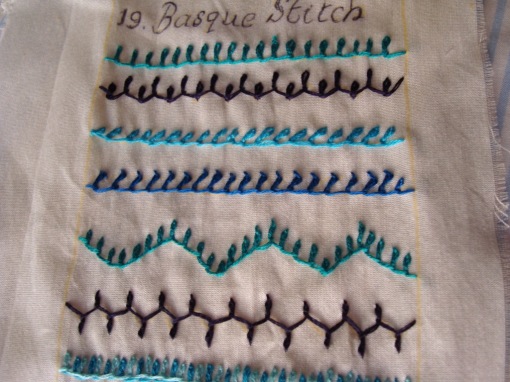This article was translated by John R. Bopp
Today we’re blogging with a mixture of surprise, curiosity, and ignorance. It turns out that among all the news about Basques around the world, the other day we received a video about embroidery that explained, in great detail, how to do the Basque stitch. To be honest, since we’re not exactly master embroiderers, we had never heard of such a thing, and we were quite surprised. So, we decided to look into the matter a bit further.
Unfortunately, our digging didn’t uncover a whole lot about why this stitch is called Basque in the English-speaking world. The only that we did uncover is that there is also such a thing as a Basque knot.


The internet is full of references to these two terms, but really only goes into how to do it, or its practical applications. So, we’ll leave you with what we’ve got, along with the video that inspired this entry, and the explanations of how to do both embroidery techniques.
But we’ll also leave you with a question: why is it that in the English-speaking world, these techniques are Basque, when those terms are not used in the Spanish-speaking world?
Pin Tangle – 17/6/2012 – USA
Basque Stitch
Basque stitch is also known as twisted daisy border stitch. As the name suggests, this stitch is found on old embroideries from the Basque area of northern Spain. Embroideries from Portugal and southern France also make use of this stitch.
(Continue) (Automatic Translation)
In a minute ago – USA
Basque Knot
Basque knot also known as Basque Loop stitch, and Knotted loop stitch. As a stitch it can be employed singly, or scattered over an area. They can also be worked as a textured line, as they can be easily worked joined together. The line produced is well defined as it is knotted. Basque knot is similar to Palestrina. The main difference, as you can see from the illustrations you work the stitch from right to left, along a line instead of left to right.
(Continue) (Automatic Translation)
Needle’n Thread – 21/6/2012 -USA
Basque Stitch Video Tutorial
You can think of the Basque stitch as a combination of twisted chain stitch and buttonhole stitch, upside down.
(Continue) (Automatic Translation)
Last Updated on Dec 20, 2020 by About Basque Country






























